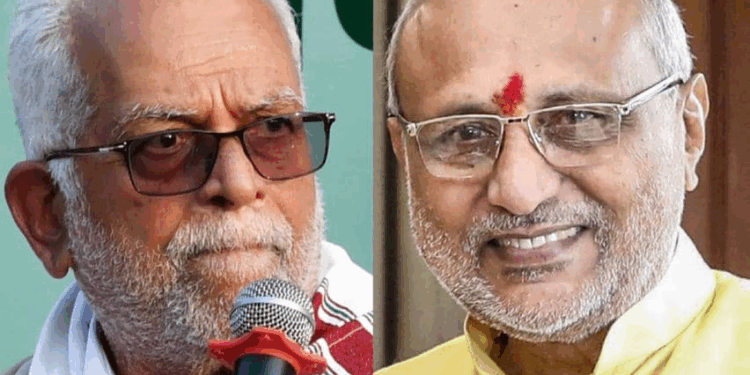The 2025 Vice President election has shaped into a two-way contest between National Democratic Alliance (NDA) nominee CP Radhakrishnan and opposition INDIA bloc candidate B Sudershan Reddy, both prominent figures hailing from southern India.
Radhakrishnan, a senior BJP leader from Tamil Nadu, brings decades of political and administrative experience. Twice elected to Parliament from Coimbatore in 1998 and 1999, he later served as BJP Tamil Nadu president, Chairman of the Coir Board, and Governor of multiple states including Jharkhand, Telangana, and Maharashtra. Known for his organizational skills, he is viewed as the establishment candidate of the NDA, which enjoys a numerical advantage in Parliament.
Reddy, born in Telangana, represents a contrasting profile. A distinguished jurist, he served as Chief Justice of the Gauhati High Court and later as a judge of the Supreme Court from 2008 to 2011. Noted for his progressive judgments on constitutional rights and social justice, he has also chaired policy committees on reservations and electoral reforms. Though not a career politician, Reddy identifies as a “liberal constitutional democrat” and is backed unanimously by INDIA bloc parties for his judicial integrity.
The Vice President of India is elected indirectly by members of both Houses of Parliament through proportional representation using a single transferable vote. The electoral college includes all 543 members of the Lok Sabha and 245 members of the Rajya Sabha, with ballots cast in secret. Candidates must be Indian citizens, at least 35 years old, and eligible for election to the Rajya Sabha. Nomination papers require 20 proposers and 20 seconders among MPs, along with a deposit.
Ballots are counted in rounds: if no candidate secures a majority of first-preference votes, the lowest-ranked candidate is eliminated and their votes redistributed according to next preferences until one crosses the required quota. The Election Commission supervises the process under Article 66 of the Constitution and the Presidential and Vice-Presidential Elections Act, 1952.
With Radhakrishnan symbolizing political experience and administrative continuity, and Reddy offering judicial gravitas and a rights-based approach, the election highlights two distinct pathways for the Vice Presidency. Analysts expect the NDA’s numerical edge to shape the outcome, but the INDIA bloc has projected Reddy’s candidacy as a moral and constitutional alternative.
The winner will succeed Jagdeep Dhankhar, who resigned earlier this year, and will also serve as the ex-officio Chairperson of the Rajya Sabha.





